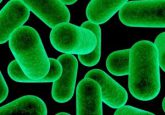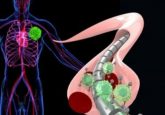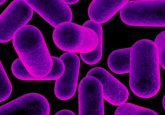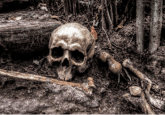The King Midas of bacteria
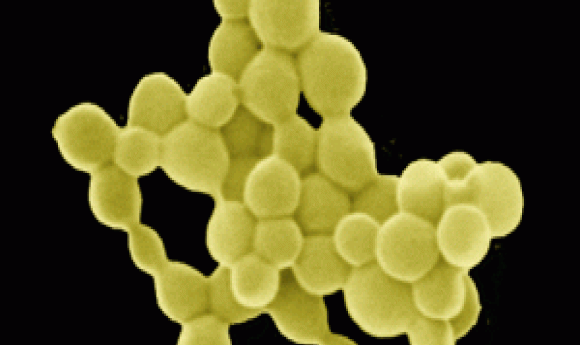
Scientists worked out the molecular pathway that enables one species of bacteria to produce gold nano-nuggets.
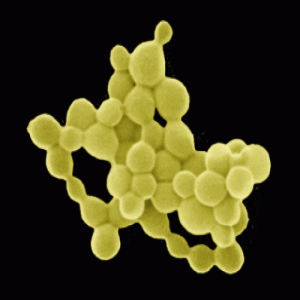
An electron microscopy image of a gold nugget produced by C. metallidurans.
Image courtesy of Dietrich Nies
King Midas is remembered in Greek mythology for his ability to turn objects he touched into gold. Surprisingly, his strange ability is shared in reality by a certain species of bacteria called Cupriavidus metallidurans.
This bacteria extracts gold from heavy metal compounds in the environment, forming tiny gold nano-nuggets. A team of researchers from Germany and Australia led by Frank Reith from the University of Adelaide and Dietrich H. Nies from Martin-Luther-Universistat Halle-Wittenberg identified the enzymes involved in this “gold cycle,” and reported their findings in Metallomics.
C. metallidurans—whose name means “metal-enduring”—is a unique species of bacteria that survives in environments with high heavy metal concentrations, which would be toxic to other bacteria. C. metalliduransis often found in industrial waste sites or mining locations, and especially in gold nuggets in Australia.
Reith and Nies investigated what molecular players are involved in helping the bacteria survive in such unfavorable environments. “We were able to figure out all the genes being switched on upon contact of the bacteria with gold,” said Nies.
Using a combination of biochemical techniques, Reith and Nies mapped out how copper and gold are processed together by the bacteria and converted into ionic forms that are more easily absorbed.
Normally, when too much copper is present within a bacterium, the CupA enzyme in the membrane pumps it out of the cell. But when both gold and copper are present in the bacterium, the gold blocks CupA, causing both metals to accumulate. To solve this problem, another enzyme called CopA—an oxidase that transforms gold from its ionic state and forms metallic compounds—is activated, creating the gold nuggets.
“From ecological conditions in the Australian soil, we go all the way down to the protein level to show which enzyme is responsible, why this enzyme is doing this job, and why this is important for the bacterium sitting in the soil and being confronted with gold particles,” Nies said.
Aside from aiding this species in surviving in strange and extreme conditions, this pathway also has biotechnological applications. For instance, the bacteria may be useful as biosensors for the gold mining industry.
